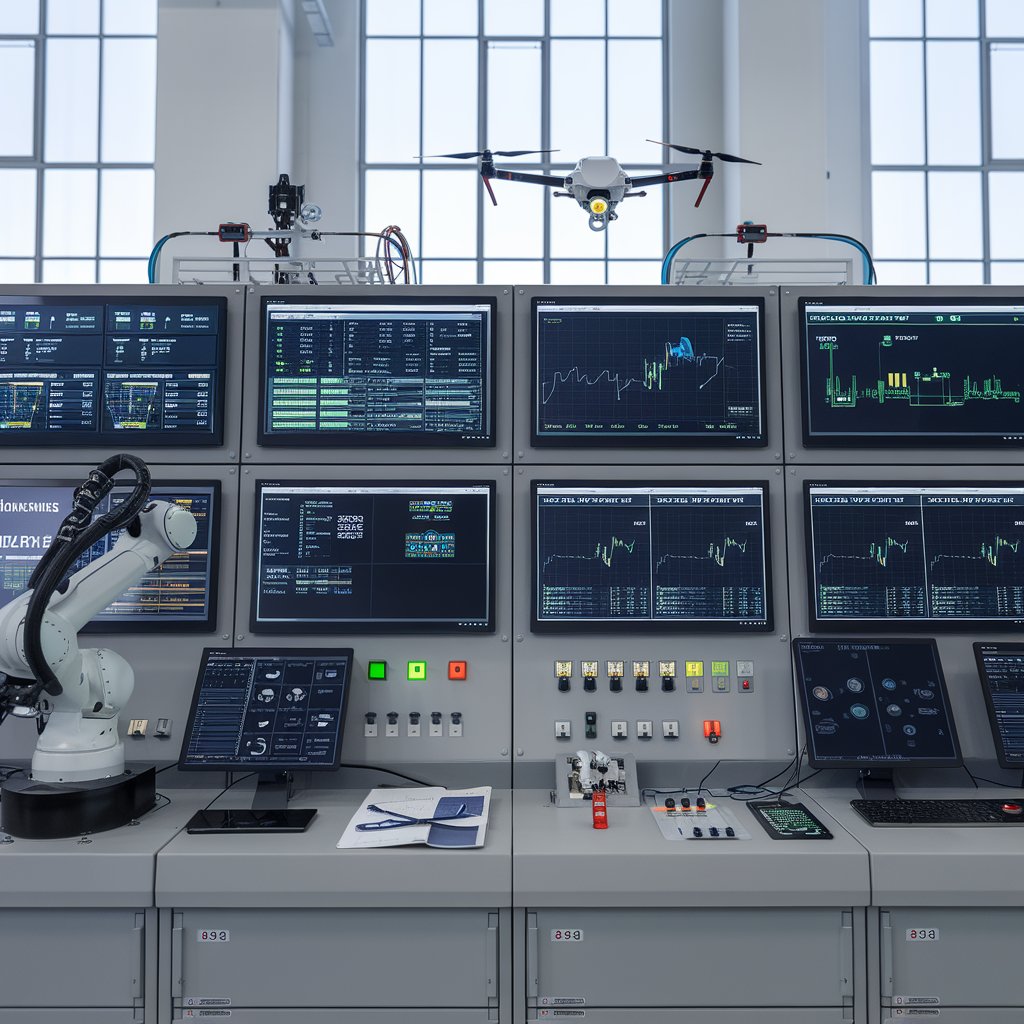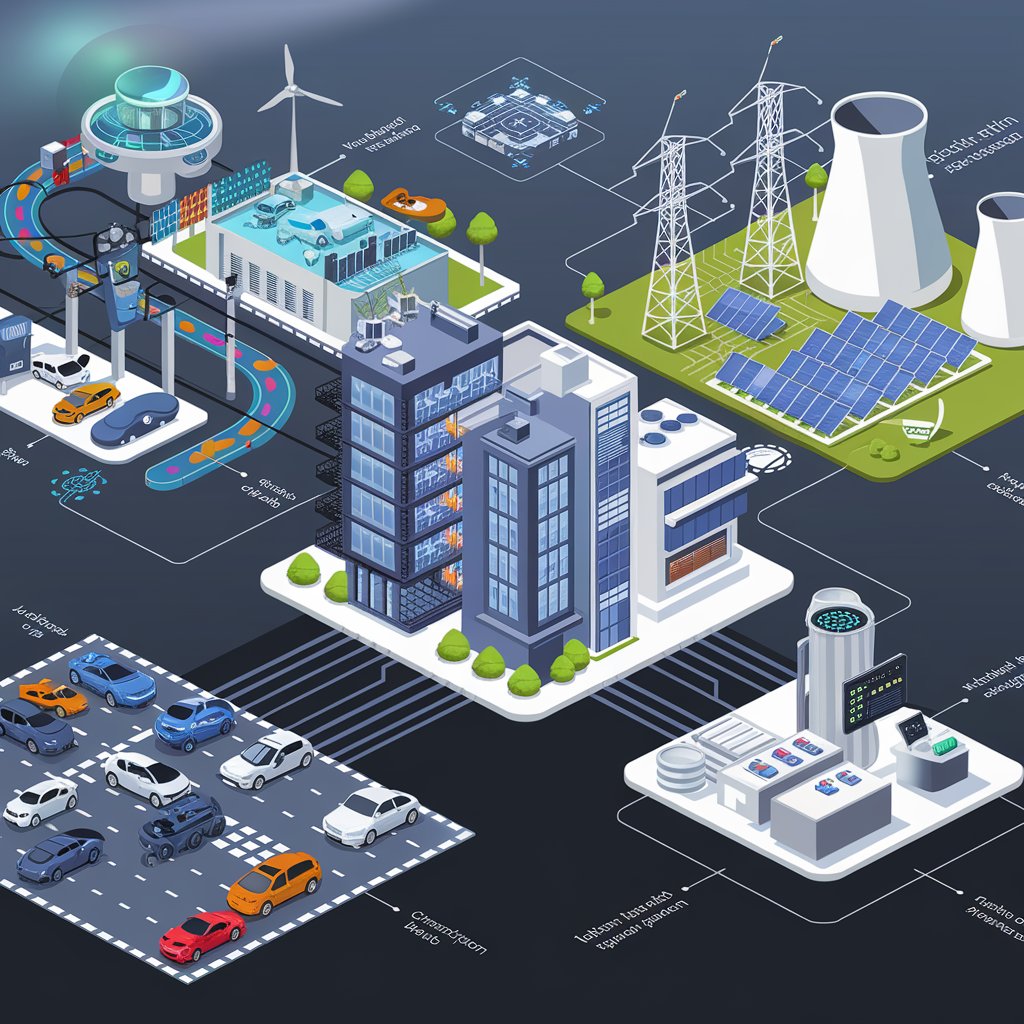Cyber-Physical Systems (CPS) represent the intelligent fusion of computational algorithms and physical components. They serve as the backbone of technologies ranging from autonomous vehicles and smart grids to industrial automation and critical infrastructure. As CPS evolve to handle more complexity, responsiveness, and autonomy, Artificial Intelligence (AI) is emerging as a transformative force, enhancing their adaptability, decision-making, and resilience. The impact of AI on the CPS industry is not only accelerating innovation but redefining how machines interact with the physical world in real time.

Understanding CPS and the Role of AI
At its core, a Cyber-Physical System integrates computing, networking, and physical processes into a unified environment. Sensors gather data from the real world, processors interpret and analyze this data, and actuators respond accordingly to influence the physical system. These feedback loops require high-speed, high-accuracy decision-making—an area where AI excels.
AI enhances CPS by introducing capabilities such as pattern recognition, predictive analytics, and adaptive control. Machine learning (ML), deep learning (DL), and reinforcement learning (RL) are enabling CPS to operate autonomously, learn from environmental interactions, and make real-time decisions without human intervention. This shift transforms CPS from reactive systems to intelligent agents capable of proactive behavior.
AI in Industrial Automation and Smart Manufacturing
In Industry 4.0, CPS and AI form the foundation of smart factories. AI-infused CPS systems optimize production lines through real-time monitoring, predictive maintenance, and dynamic resource allocation. Machine learning models analyze sensor data to detect anomalies, schedule repairs, and even reconfigure production parameters autonomously, reducing downtime and enhancing efficiency.
Collaborative robots (cobots), a critical CPS element, are enhanced by AI to safely operate alongside humans. AI allows these robots to adapt to new tasks, avoid obstacles, and respond to voice or gesture commands, increasing their flexibility in diverse manufacturing scenarios.
Download PDF Brochure @ https://www.marketsandmarkets.com/pdfdownloadNew.asp?id=150375126
Autonomous Vehicles and Intelligent Transportation
Autonomous vehicles are among the most prominent examples of AI-powered CPS. These systems integrate physical components (sensors, actuators, control systems) with complex AI algorithms that interpret visual data, make driving decisions, and ensure safety.
AI enables real-time object detection, lane tracking, and navigation by fusing data from LiDAR, cameras, radar, and GPS. Deep learning algorithms constantly improve driving behavior based on accumulated data, allowing the CPS to evolve and learn in diverse traffic and weather conditions. The result is a safer, more efficient transportation network driven by intelligent decision-making and continuous feedback.
Smart Energy Systems and Grids
AI-driven CPS are pivotal in modernizing energy systems, particularly smart grids. These systems require real-time balancing of supply and demand, rapid fault detection, and seamless integration of renewable sources. AI algorithms optimize energy distribution by analyzing consumption patterns, forecasting demand spikes, and rerouting power during outages or emergencies.
For distributed energy resources (DERs), AI-enhanced CPS coordinate local solar, wind, and battery storage units to maintain grid stability. This capability is essential for achieving sustainability goals and building resilient infrastructure in the face of climate-related disruptions.

Healthcare and Medical Cyber-Physical Systems
In healthcare, AI-powered CPS are enabling personalized and precision medicine through intelligent medical devices. Wearables and implantables collect physiological data, which AI analyzes to detect health anomalies, predict disease progression, and recommend interventions.
For instance, smart insulin pumps, pacemakers, and robotic surgical tools function as CPS, continuously adapting based on patient data. AI ensures these devices make decisions aligned with real-time biological changes, improving patient outcomes and safety. Furthermore, AI can help ensure compliance with medical regulations by logging and analyzing device behavior.
AI in Critical Infrastructure and Safety Systems
Cyber-Physical Systems are integral to infrastructure such as water supply networks, transportation hubs, and building automation. AI plays a key role in making these systems more resilient and secure. Intelligent monitoring systems, backed by AI, can detect and respond to equipment failures, security breaches, or environmental hazards before they escalate.
For example, in smart buildings, AI enhances CPS by adjusting HVAC and lighting systems based on occupancy and external conditions, reducing energy usage while maintaining comfort. In disaster-prone regions, AI-driven CPS can analyze sensor data to predict landslides, floods, or structural weaknesses, providing early warnings and enabling rapid responses.
Challenges in AI Integration with CPS
Despite the potential, the integration of AI into CPS presents several challenges. One major concern is real-time performance—AI algorithms, especially deep learning models, often require significant computational resources that may not be available in embedded CPS platforms.
Security and privacy are also critical. AI can introduce new attack vectors in CPS, making systems vulnerable to adversarial manipulation or data breaches. Ensuring that AI-enhanced CPS operate safely under uncertain conditions and comply with industry regulations requires robust testing and verification frameworks.
Another challenge lies in explainability. In safety-critical CPS applications (like aviation, medical devices, or power systems), decision-making must be transparent and auditable. Black-box AI models can create trust and accountability issues unless supported by interpretable AI methods.
The Future Outlook
The future of the CPS industry is intrinsically tied to the evolution of AI. As edge computing, 5G/6G connectivity, and neuromorphic chips become mainstream, CPS will gain more localized processing power to support advanced AI algorithms in real time. We’ll see more self-adaptive, self-healing systems that evolve through experience—just as living systems do.
AI will also play a key role in the standardization and interoperability of CPS, enabling different systems to communicate, cooperate, and co-evolve in shared environments. In the long run, the fusion of AI and CPS will underpin the development of smart cities, autonomous supply chains, and intelligent public services.
The impact of AI on the Cyber-Physical Systems (CPS) industry is profound and accelerating. By augmenting CPS with learning, perception, and decision-making capabilities, AI is redefining how machines perceive and act in the physical world. From autonomous vehicles and energy management to healthcare and industrial automation, AI-powered CPS are enabling smarter, safer, and more adaptive environments.
While technical and ethical challenges remain, the benefits of this convergence are clear: faster responses, improved resilience, and unprecedented levels of automation and intelligence. As AI continues to mature, it will elevate CPS from interconnected systems to intelligent ecosystems that drive the next wave of industrial and societal transformation.
About MarketsandMarkets™
MarketsandMarkets™ has been recognized as one of America’s Best Management Consulting Firms by Forbes, as per their recent report.
MarketsandMarkets™ is a blue ocean alternative in growth consulting and program management, leveraging a man-machine offering to drive supernormal growth for progressive organizations in the B2B space. With the widest lens on emerging technologies, we are proficient in co-creating supernormal growth for clients across the globe.
Today, 80% of Fortune 2000 companies rely on MarketsandMarkets, and 90 of the top 100 companies in each sector trust us to accelerate their revenue growth. With a global clientele of over 13,000 organizations, we help businesses thrive in a disruptive ecosystem.
The B2B economy is witnessing the emergence of $25 trillion in new revenue streams that are replacing existing ones within this decade. We work with clients on growth programs, helping them monetize this $25 trillion opportunity through our service lines – TAM Expansion, Go-to-Market (GTM) Strategy to Execution, Market Share Gain, Account Enablement, and Thought Leadership Marketing.
Built on the ‘GIVE Growth’ principle, we collaborate with several Forbes Global 2000 B2B companies to keep them future-ready. Our insights and strategies are powered by industry experts, cutting-edge AI, and our Market Intelligence Cloud, KnowledgeStore™, which integrates research and provides ecosystem-wide visibility into revenue shifts.
To find out more, visit www.MarketsandMarkets™.com or follow us on Twitter , LinkedIn and Facebook .
Contact:
Mr. Rohan Salgarkar
MarketsandMarkets™ INC.
1615 South Congress Ave.
Suite 103, Delray Beach, FL 33445
USA: +1-888-600-6441
Visit Our Website: https://www.marketsandmarkets.com/